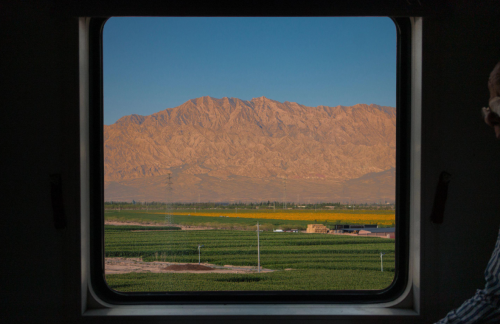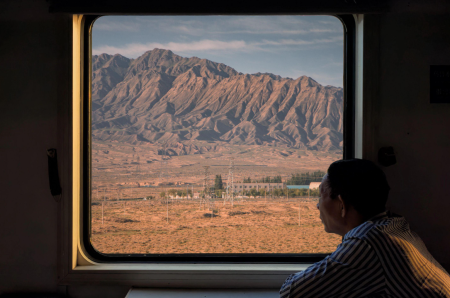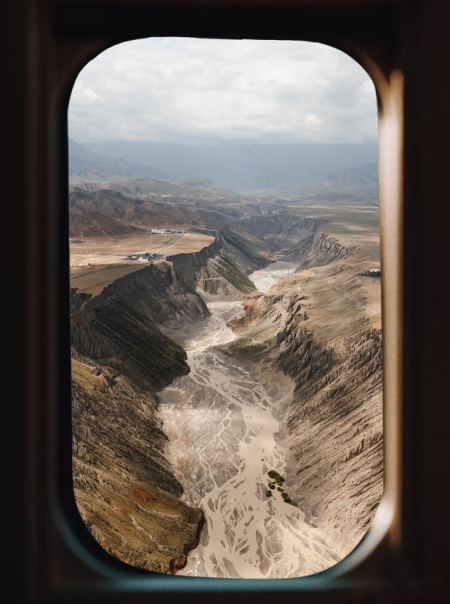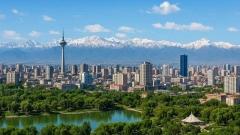Xinjiang, China’s vast northwestern region, is famous not only for its deserts, snow-capped mountains, and Silk Road towns — but also for having some of the longest and most scenic train routes in the country. Traveling by train across Xinjiang is an unforgettable experience: you’ll pass from sand dunes to alpine forests, cross ancient cities, and witness landscapes that few other journeys can offer.
Whether you’re heading to Kashgar, Turpan, or the remote Ili Valley, this guide will help you understand what to expect from train travel in Xinjiang — routes, comfort, ticket options, and tips for a smooth trip.
The Magic of Train Travel in Xinjiang
Xinjiang’s sheer size is astonishing — it takes more than 2,000 kilometers to travel from its eastern border near Gansu to its western edge by the Pamir Plateau. Trains make this enormous region surprisingly accessible, connecting both major cities and remote areas.
Unlike flying, traveling by train lets you see the real Xinjiang: endless grasslands, red deserts, salt lakes, and snow mountains that change dramatically along the route. Many travelers say the train ride is a journey through different worlds within one province.
Major Train Routes Across Xinjiang
Xinjiang’s rail system has expanded rapidly in the past decade. Here are some of the key routes you can explore:
(1) Urumqi – Kashgar Line (Southern Route)
-
Distance: About 1,500 km
-
Duration: 14–17 hours (overnight train)
-
Highlights: Turpan, Korla, Kuqa, Aksu, Kashgar
This line follows the southern edge of the Tianshan Mountains, passing through the Taklamakan Desert Basin. You’ll see dunes, ancient ruins, and oases that once hosted Silk Road caravans.
(2) Urumqi – Altay Line (Northern Route)
-
Distance: 460 km
-
Duration: 5–6 hours (high-speed train)
-
Highlights: Changji, Fuyun, Altay
Perfect for nature lovers, this route takes you to Kanas Lake and the Altay Mountains, famous for their birch forests and blue lakes.
(3) Urumqi – Ili / Yining Line
-
Distance: 710 km
-
Duration: 4–5 hours (high-speed)
-
Highlights: Sayram Lake, Guozigou Bridge, Ili Valley

Sayram Lake
One of the most scenic high-speed routes in China — it crosses mountains and valleys with breathtaking views of Sayram Lake. In summer, it’s one of the most photogenic train rides in Asia.
(4) Lanzhou – Urumqi High-Speed Line
-
Distance: 1,776 km
-
Duration: 9–11 hours
-
Highlights: Zhangye Danxia, Dunhuang (off-route), Hami, Turpan
This route connects Xinjiang to mainland China’s high-speed network, making it easier than ever to reach Urumqi from eastern cities like Xi’an or Chengdu.
Types of Trains and Classes
Xinjiang trains range from modern high-speed G-series to comfortable overnight sleeper trains. Here’s what you can expect onboard:
🚄 High-Speed Trains (G/D Series)
-
Modern, clean, and punctual
-
Seat classes: Second class, first class, business class
-
Electric outlets, air conditioning, and quiet cabins
-
Snack carts and dining car available
🚃 Regular Trains (T/K Series)
-
Often used for long-distance overnight routes
-
Sleepers available: soft sleeper (4 beds), hard sleeper (6 beds), and hard seat
-
Great choice for budget travelers or those seeking a classic railway experience
Tip: For long journeys like Urumqi–Kashgar, a soft sleeper ticket is well worth it for privacy and comfort.
Scenery to Watch Along the Way
Train travel in Xinjiang is not just about getting from point A to B — it’s about watching the landscape transform:
-
Between Turpan and Korla: Endless desert and mirages of salt lakes.
-
Approaching Kuqa: Red sandstone cliffs of the Tianshan Grand Canyon.
-
Towards Ili: Alpine forests, meadows, and turquoise Sayram Lake.
-
Near Altay: Rolling grasslands and glittering rivers that seem untouched by time.
If possible, travel during daylight hours — or take an early morning or afternoon departure — to enjoy these spectacular views.
Buying Train Tickets in Xinjiang
Tickets can be purchased through:
-
12306 China Railway website or app (requires ID/passport verification)
-
Official ticket offices or railway stations
-
Travel agencies like China Dragon Travel, which can help foreign visitors book in advance and arrange delivery
Important:
-
Bring your passport when collecting or boarding.
-
Tickets open for booking 15 days in advance online.
-
During July–September, book early — it’s Xinjiang’s busiest travel season.
Onboard Experience and Tips
-
Food & Drinks: Dining cars serve Chinese-style meals and snacks. Bring your own instant noodles, as hot water is always available.
-
Restrooms: Clean on high-speed trains; basic but serviceable on regular ones.
-
Electricity: Each seat or cabin has outlets for phone charging.
-
Language: Announcements are in Mandarin and English on high-speed trains; staff are generally helpful.
-
Luggage: There’s overhead space for small suitcases; larger ones can go behind seats.
Combining Train Travel with a Tour
For many travelers, train travel is best when paired with a guided or semi-guided tour. Xinjiang’s train network connects directly to:
-
Turpan: Ancient ruins and grape valleys
-
Kashgar: Old Town, Sunday Bazaar, and Karakoram Highway
-
Ili / Sayram Lake: Alpine summer landscapes
-
Altay: Kanas and Hemu Villages
Joining a China Dragon Travel itinerary ensures smooth transfers, local guides, and hotel bookings that match train schedules — perfect for those who want a stress-free adventure.
Why Choose Train Travel Over Flying
While flying is faster, trains in Xinjiang offer:
-
Better scenery: Watch landscapes unfold gradually.
-
Cultural immersion: Travel alongside locals.
-
More flexibility: Stops at smaller cities not served by airports.
-
Eco-friendliness: Rail travel has a lower environmental footprint.
If you have time, at least one long train ride across Xinjiang will be a highlight of your trip — a journey of both miles and meaning.
Conclusion
Xinjiang’s train network opens the door to some of China’s most extraordinary landscapes and cultures. From the deserts of Turpan to the snowy peaks near Altay, every journey is a new perspective on this vast region.
Traveling by train in Xinjiang is safe, comfortable, and surprisingly efficient — whether you’re exploring solo or joining a China Dragon Travel group tour.
Sit back, sip some tea, and watch 2,000 kilometers of history, nature, and life roll by your window.


















